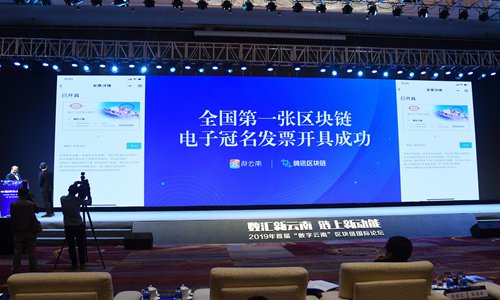As the President’s National Security Strategy says, it is time the United States “rethink the failed policies of the past two decades – policies based on the assumption that engagement with rivals and their inclusion in international institutions and global commerce would turn them into benign actors and trustworthy partners.” The report illustrates how the policies and actions of the Chinese Communist Party have compelled the United States to adopt a competitive strategy, guided by a return to principled realism. Too late.
Amy Cooper’s dog

https://twitter.com/i/status/1264965252866641920 Amy’s dog has more rights than human. 5-26-20 She does not look like a racist but her behavior is, what a closet racist is normally. There are thousands of them, walk your street, say hi to you, but when the time is right, they reveal themselves.
China’s state-run digital currency may be released early for post-COVID-19 stimulus: industry inside

China may accelerate the rollout of its state-run digital currency to counter potential US threats to Chinese financial institutions and the yuan’s international settlement, while facilitating the implementation and management of large-scale post-COVID-19 stimulus, said an industry insider.
“Although the US hasn’t put Chinese financial firms and institutions onto its Entity List, the US may still pose widespread threats to Chinese institutions and impact the yuan’s standing in international settlement. In this regard, China’s state-run digital currency may be rolled out sooner than expected to counter a possible US block, Cao Yin, a Beijing-based blockchain industry insider, told the Global Times on Tuesday.
Yi Gang, governor of the People’s Bank of China (PBC), said that internal pilot tests of the central bank’s digital currency are being carried out in four cities including Shenzhen in South China’s Guangdong Province and the Xiongan New Area, and will be carried out in scenarios for the 2022 Winter Olympic Games in Beijing, according to an article posted on the bank’s website on Tuesday.
“These tests are just routine work for the research and development (R&D) of the digital currency. No schedule for an official launch has been revealed, Yi said.
Any R&D progress of China’s state-run digital currency is widely reported, as the digital economy is increasingly becoming a momentum for global growth, especially amid the pandemic which forces social distancing.
To aid economic recovery, China aims to step up its fiscal policy by raising the deficit-to-GDP ratio to over 3.6 percent and further cut taxes and fees paid by corporations by 2.5 trillion yuan ($353 billion) in 2020. But concerns persist that numerous grassroots companies will not fully enjoy the favorable policy.
Cao said that the tracing characteristics of the blockchain-backed digital currency can help money flow into the real economy and toward firms in need.
The R&D and application of a fiat digital currency will efficiently meet the public’s needs for the currency so as to promote payment convenience and safety in retail, which will help boost the development of China’s digital economy, Yi said.
The PBC began R&D for a fiat digital currency relatively early. A special team was established in 2014 to carry out research on its framework, key technologies and international experience. At the end of 2017, the bank organized for some commercial banks and institutions to jointly conduct the R&D of China’s digital currency/electronic payment (DC/EP).
China imported 5.16 million tons of crude oil from Saudi Arabia
China imported 5.16 million tons of crude oil from Saudi Arabia in April, touching a record low from 2019 May. This is puzzling, with the low price, one would think China would import a lot of crude. What is happening? Perhaps this is one of the reasons? 100 million tons of oil reserves were detected in CNOOC-owned Kenli 6-1 oilfield. It is the first 100 million-ton oilfield in Bohai Bay area, guaranteeing China’s energy security and boosting the economy of regions around the sea.
